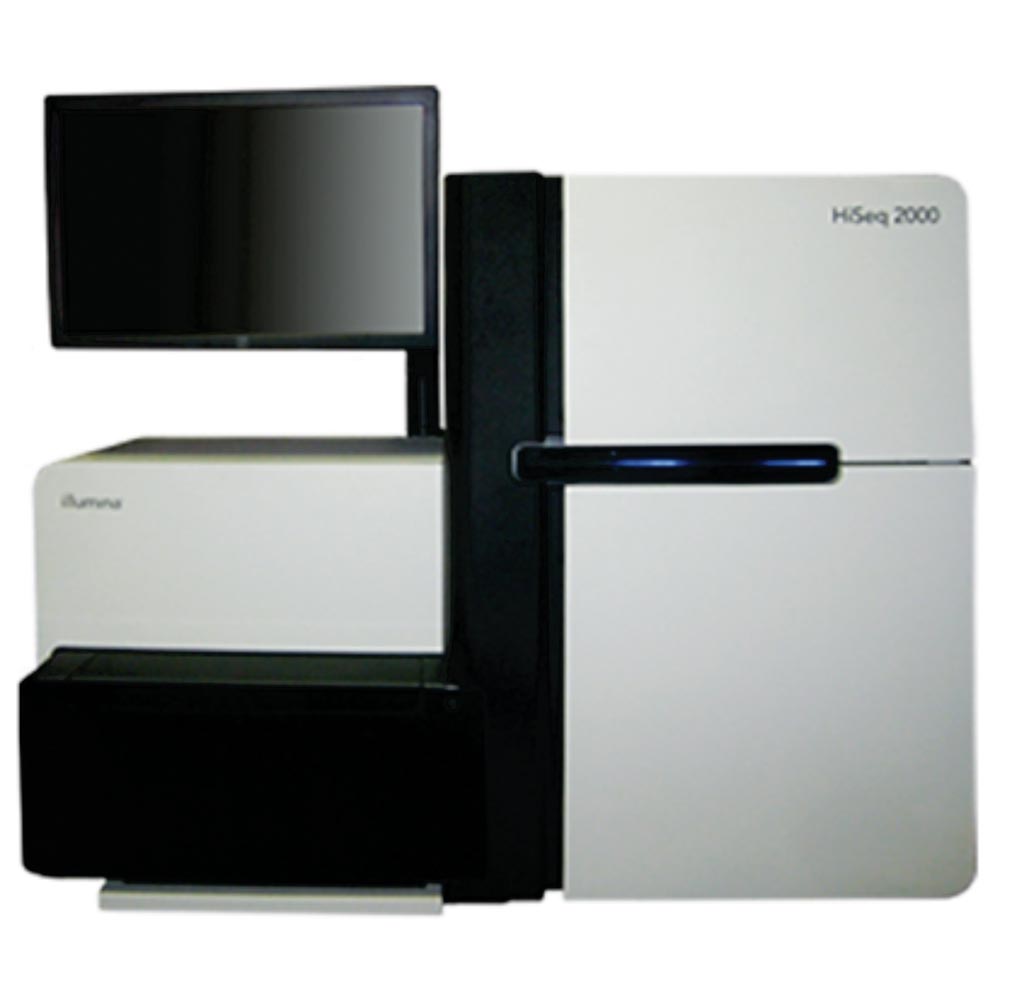Recurrent Rearrangements Identified in Soft Tissue Tumors
By LabMedica International staff writers
Posted on 06 Jul 2018
A new genomic and transcriptomic analysis of rare, soft tissue tumors that develop in infants has detected recurrent specific gene rearrangements that may render them responsive to targeted treatment.Posted on 06 Jul 2018
Many childhood tumors show a predilection for specific developmental stages. Tumors that predominantly occur in infancy include congenital mesoblastic nephroma (CMN), which accounts for 4% of all childhood renal malignancies and the majority of those diagnosed in children less than six months of age.

Image: The HiSeq 2000 sequencing platform (Photo courtesy of Illumina).
Scientists at the Wellcome Trust Sanger Institute (Hinxton, UK) and their colleagues performed whole-genome sequencing and RNA sequencing on samples from 18 infants with cryptogenic congenital mesoblastic nephroma (CMN) or infantile fibrosarcoma (IFS) soft tissue tumors, identifying epidermal growth factor receptor (EGFR) internal tandem duplications (EGFR-ITD), intragenic duplications involving B-Raf Proto-Oncogene, Serine/Threonine Kinase (BRAF), and other suspicious rearrangements.
Tumor DNA and RNA were extracted from fresh frozen tissue that had been reviewed by reference pathologists. Normal tissue DNA was derived from blood samples. Whole genome sequencing was performed by 150-bp paired-end sequencing on the HiSeq X platform. Messenger RNA was enriched by polyA-selection and sequenced on an Illumina HiSeq 2000 (paired end, 75-bp read length). Other complimentary methods were also used. The team used PCR to screen for similar rearrangements in tumors from 89 more CMN or IFS cases, 208 Wilms tumor cases, 20 cases of clear cell sarcoma of the kidney, three malignant rhabdoid tumor cases, and a dozen nephroblastomatosis cases, picking up EGFR-ITDs in 20 of 35 classical CMN cases, two of 17 cellular CMNs, and nine of 11 CMN tumors with mixed histology.
The scientists discovered through subsequent polymerase chain reaction (PCR)-based screening studies on hundreds more cases of CMN, IFS, and other soft tissue tumors from infants with nephroblastomatosis, Wilms tumor, malignant rhabdoid tumor, or clear cell sarcoma of the kidney. The team again saw recurrent EGFR-ITD in a significant proportion of classical or mixed CMN cases, and in a smaller subset of CMNs with cellular histology. On the other hand, within-BRAF duplications turned up in a handful of cellular CMN or IFS cases. Three of the IFS tumors tested in the follow-up analysis harbored the BRAF rearrangements, including two tumors with both BRAF rearrangements and ETV6-NTRK3 gene fusions.
The authors concluded that the finding of co-mutation of Neurotrophic Receptor Tyrosine Kinase 3 (NTRK3) and BRAF in IFS raises the possibility of intrinsic resistance of some tumors to TRK inhibition, regardless of whether these mutations occur in the same clone or in independent competing clones. These considerations underscore the need for adequate genomic profiling in order to match patients to the most appropriate basket studies and to enable meaningful interpretation of treatment responses.
Related Links:
Wellcome Trust Sanger Institute













